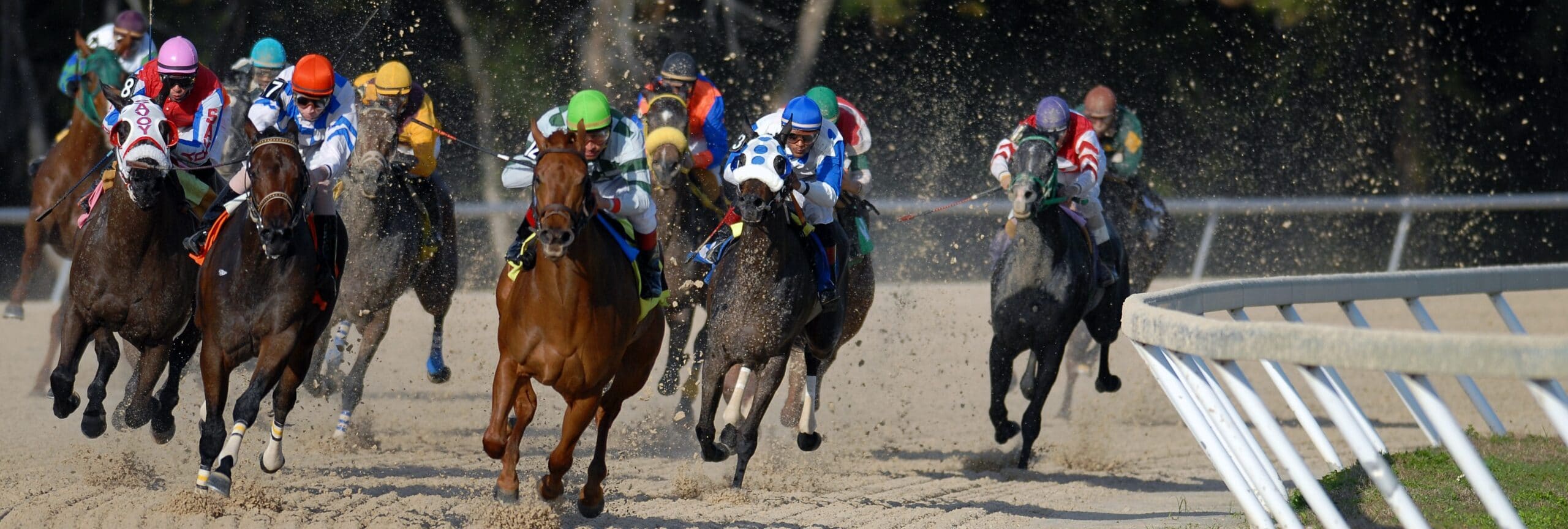What is the first thing that comes to mind when you think of betting? We’re betting it is horse racing! Even if you’ve never watched a race in your life. For instance, have you ever watch a gangster movie? We bet you have! And every gangster movie has a bookie (short for bookmaker) in it. And what do his customers (better known as bettors) bet on? Horses! Horse racing and betting go way back. Some would argue that without betting, there would be no horse racing.
Millions of people around the world bet on horse racing. Even the Queen of England likes to place a bet now and then. So why not you?
Horse racing is the most popular sport to bet on in the USA, UK, France, and Germany. It is also prevalent in Japan, the United Arab Emirates, and Hong Kong. As a matter of fact, Japan is one of the leading nations when it comes to horse racing. We bet you didn’t know that!
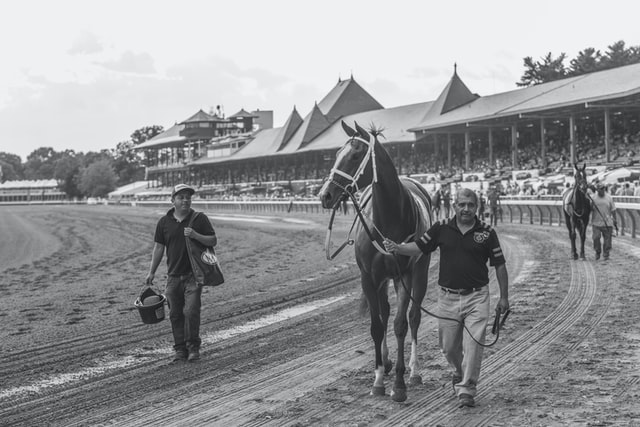
The Royal Ascot in the UK, the American Kentucky Derby, the Melbourne Cup in Australia. These are significant annual racing events that are known all over the world. If not for the racing itself, then for the many traditions and festivities that surround them. Betting is most definitely one of those traditions.
Betting on horse racing is exciting and fun. It takes expertise, knowledge, and, oh yes, a bit of luck to place a winning bet. You can make it as simple or complicated as you like. From placing a bet on your favorite horse to win the race. To combining different outcomes from different races in one single bet. Also known as an accumulator.
How to bet on Horse Racing
Betting on horse racing takes some planning and knowledge. A lot of factors come into play when choosing the winning bet. The horse is essential, obviously. But the same goes for the jockey riding the horse. And don’t forget the trainer! Very important when it comes to selecting a winner. But other things are important too. What type of race are you betting on? And which track? What’s the weather going to be like? Gathering information should be your priority. Luckily there are a lot of tipsters and experts out there to help you get started. Don’t let all this information overwhelm you, though! Betting is fun. Just give it a go and see how it plays out.
Now that you have decided to give betting a go, what comes next? First things first. To place a bet, you will need a bookmaker. Most bookmakers have an online platform. On their website, you can find an overview of all the ongoing and upcoming races. The odds can vary between bookmakers, so comparing bookmakers is always a smart choice.
To place a bet with a bookmaker (also known as a bookie), you need to register an account as a bettor (a.k.a. someone who places a bet) on their website. Next, you have to put money in your bookmaker’s account. Ensure the website’s privacy statement and use a safe banking option (e.g., credit card transfer, PayPal, etc.).
Once you have done that, you are free to place a bet. Select a race, choose your stake, and follow the instructions. If you lose your bet, the money will automatically be deducted from your bookmaker’s account. Did you win? Congratulations! The bookmaker will deposit the funds in your account shortly.
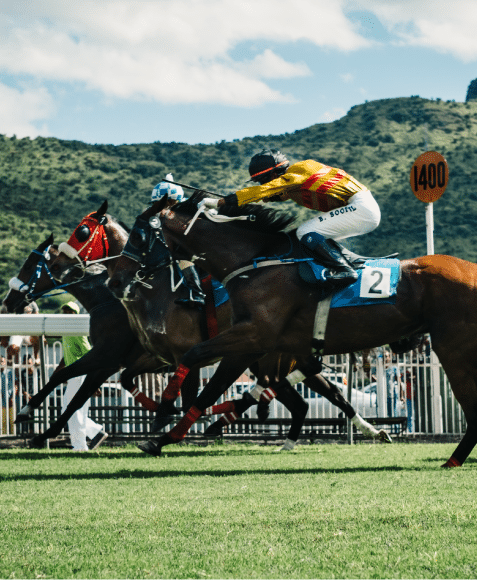
When placing an online bet, you can never bet more than the amount of money you have put in your account. Make sure to only play with money you can afford to miss. Betting is never a sure thing. Losing the money you need for other things is just plain stupid.
Betting on Horse Racing for beginners
When betting on horse racing, you are betting on a horse to win the race. Sounds easy, right? Well, yes and no. Because choosing a winner doesn’t only depend on the horse itself. It also depends on its starting position compared to the rest of the field. The jockey and the trainer are also vital factors when it comes to picking your bet. There are a lot of things to take into account.
The type of track, for instance, is another crucial factor you need to consider. Dirt, turf, or synthetic? Each has different pros and cons. The type of track can make a huge difference. Some even breed horses to race on specific types of track.
And let’s not forget about the weather. The weather can make or break a race. Some horses don’t like rain, and others can’t stand the heat. Some tracks are better suited to a specific type of weather. And the track can cancel races due to the weather. For instance, when it’s pouring with rain. There is no use placing a bet on those days.
Three Forms of Horse Racing
But before you start looking into all these options, you have to decide on the type of race you are betting on because no two races are alike. For starters, you have different forms of racing: flat racing, jump racing, and harness racing. The distance the horses need to race can be different. We will walk you through the most important things you need to know.
Flat racing:
Horses ridden by jockeys race a certain distance without having to overcome obstacles. Flat racing is the most common form of racing.
Jump racing:
Also known as the National Hunt or Steeplechasing. Horses are ridden by jockeys who race a certain distance while also having to overcome certain obstacles. These obstacles can be simple hurdles and include a variety of other obstacles, such as fences, ditches, or water.
Harness racing:
Horses are pulling a sulky driven by a jockey race a certain distance. The horses have to run at a predetermined trot or pace and are not allowed to gallop.
The Distance of a Horse Race
Racing distance is another critical factor. The length the horses will have to race influences the type of race. Most races are over distances ranging between a 5/8 mile distance up to a 1 ½ mile distance. But some can be shorter or longer. There are two types of distance racing worth special mention: Endurance racing and Quarter Horse racing.
Endurance racing: These races take place over a long distance or more extended time. Speed isn’t essential; stamina and endurance are what makes a winner. Most endurance races are over a 50-mile stretch, but prestigious races cover 75 – 100 miles. The longest endurance race is the Mongol Derby, with a whopping 600 miles that have to be covered.
Quarter Horse racing: the racing distance for these races is a quarter mile or less. These races are all about a quick burst of speed and are over before you know it. It would help if you had a special breed of horse, most commonly known as Quarter Horses, to race such a short distance. Most thoroughbreds need to cover some distance before they get up to speed.
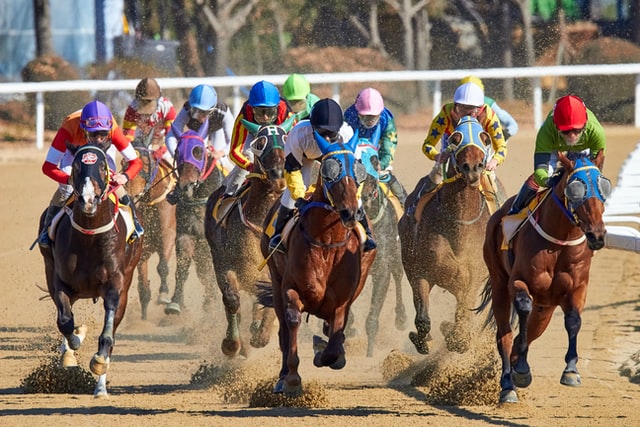
Different Race Types
Just as there are different leagues in football, there are various racing classes. Most commonly known as Handicaps, Listed and Group racing in the UK. They are known as Stakes and Graded Stakes racing in the US.
Handicap or conditioned racing:
you could see these as the qualifier races for the big leagues. In principle, any horse can enter these races. Before the racehorses are assigned an amount of weight (the handicap), they need to carry during the race. Individuals are basing the handicap on their sex, age, prior racing history, etc. This ranking helps determine how well they are expected to do in that race than the other horses.
Listed or Stakes racing:
This is the next step up. An entrée fee will need to be paid to enter the race, and the horse needs to meet specific requirements. The races usually come in different categories: races only for 3-year-olds, or only for fillies, or only for horses that have won certain races.
Group or Grades Stakes racing:
This is the big league. To compete in one of these races, the owner needs to pay a severe entry fee, and the horse will have to have performed well in the Listed or Stakes races. Horses entered in these races are the crème de la crème of the racing world.
A particular category is Maiden racing. Only horses who have never won a race are allowed to enter. These races are more challenging to predict because most horses will be relatively unknown.
To make the most of horse racing bets, you will need to invest time, money, and energy. It would be best if you learned to find your way in the maze of different races, categories, horses, jockeys, and trainers. Luckily, there are plenty of tipsters and experts out there willing to share their knowledge. They can help you to get familiar with the racing world and get you started. You can make betting on horse racing as straightforward or as complicated as you like.
Type of Horse Racing bets
As with everything in horse racing, you can make your bet as straightforward or as complicated as you like. There are many different options to choose from. Here are just some options to get you started.
The three most commonly used bets are also known as basic bets:
- Win bet: you pick the winner.
- Place bet: you pick the horse you expect to win or place second.
- Show bet: you pick the horse you expect to win, place second or third.
Pretty straightforward, wouldn’t you say? But this is where it gets interesting. Why not combine bets or see if you can pick more than just the top 3? These are called exotic wagers, and they come in two versions vertical and horizontal exotic bets.
Vertical exotic bets: you are betting on a combination of outcomes in the same race.
- Straight Exacta: you must pick the winner and runner up of the race in the correct order.
- Straight Trifecta: you must pick the winner, 2nd, and 3rd place of the race in the correct order.
- Straight Superfecta: you must pick places 1 – 4 of the same race in the correct order.
Horizontal exotic bets: you are betting on a combination of outcomes in several different races.
- Daily Double: you must pick the winner in 2 races in a row.
- Pick 3: you must pick the winner in 3 races in a row.
- Pick 4, 5, or 6: you get the point, don’t you?
To make matters even more interesting, you can combine the different outcomes of even more races in all kinds of different combinations. These bets have lovely names such as Trixie, Lucky 15, Goliath, Heinz, or Super Yankee. The odds are usually fantastic, but… that’s because the chances of actually pulling these types of complicated bets off are….well….usually not that good. So, why do it at all? Because of the buzz of getting it right. Working your way up, correctly predicting the outcome of a series of races. The chance to make some serious money. That’s what horse racing is all about.
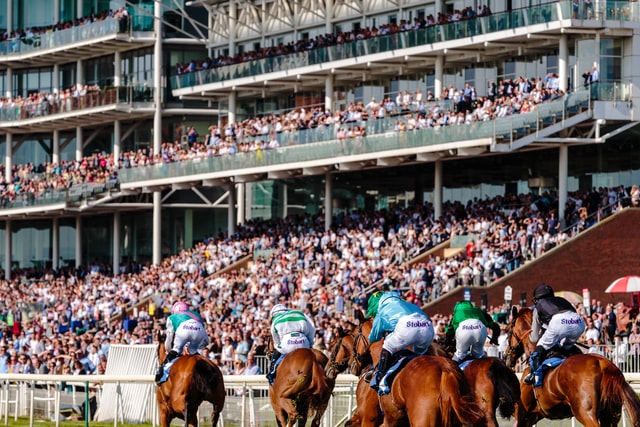
Horse Racing betting odds
Are you ready to crunch some numbers? This is the tricky part when it comes to betting: how to read the odds. What are odds exactly? Odds calculate the likelihood of an event happening compared to the probability of the event not happening.
For instance: a race with only three horses in it has three possible outcomes:
- Horse A wins.
- Horse B wins.
- Horse C wins.
Statistically speaking, the chance of Horse A winning is one in three. This outcome is what we call the odds.
Easy right? If only things were this easy all the time. When calculating the odds, other factors have to be taken into account as well. The jockey, the trainer, the starting position, the weather, the track. The list goes on and on. Most bookmakers use statistics to calculate their odds.
When placing a bet, you like to have an idea of your possible winnings, don’t you? So being able to read the odds is pretty essential. You need to know if a bet is a good value before you stake your money on it. To make things even more interesting, odds are displayed in three different ways: decimal, fractional, and Moneyline.
Decimal odds:
these allow you to calculate precisely how much money you will get paid by the bookmaker if you win. For instance:
If you place €10 on a bet with 1.50 odds, you will get €10 x 1.50 = €15 in return. If your gamble pays off, of course.
€15 (your return) – €10 (your original stake) = €5 (your profit).
The decimal odds are very popular because they are easy to understand. They are most commonly used on the European continent, which is why they are sometimes called European odds.
Fractional odds:
these odds show you how much profit you will make if you win.
If you place that same €10 on a bet with 1/2 odds, you will profit of 10:2 = €5 if you win.
The bookmaker will pay you €5 (your profit) + €10 (your original stake) = €15 (your return).
Fractional odds are most commonly used in the UK and Ireland.
Moneyline odds:
there are positive and negative money line odds. The favorable odds show you how much you will win from a $100 stake. The unfavorable odds show you how much you need to stake to win $100.
For instance: if you place a $100 bet on +500 odds, you will make a $500 profit.
Or, if you are looking to win $100, you will need to place $500 on a bet with -500 odds.
Moneyline odds are also known as American odds or US odds because they are most commonly used in the USA.
Bookmakers spend a lot of time, money, and effort on calculating their odds. They need to make a profit after all. If you are comfortable reading these odds, you will compare their calculations with your expected outcomes. If your predictions are better than theirs, you stand to make a nice little profit.
Professional tipsters have turned this into an art form. To them, it doesn’t matter which horses have been entered into the race. They are only looking for any miscalculations the bookmakers might have made and place their bets accordingly.
You can also try tennis, mma or football if football is not your game of choice.
